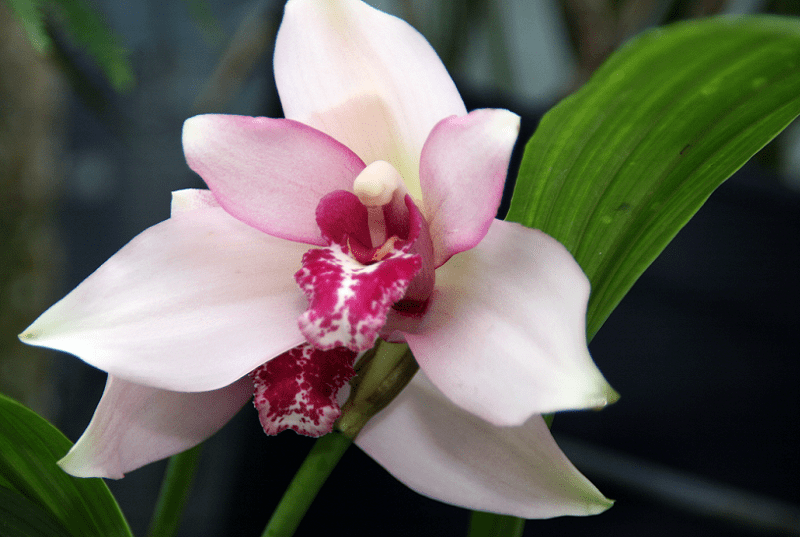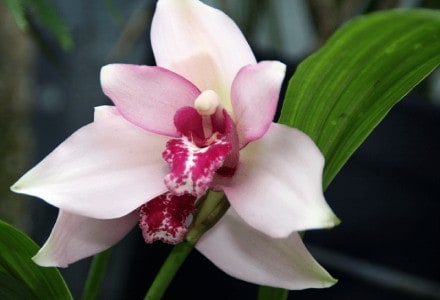
Lycaste Orchid Facts
- Firstly, the term Lycaste Orchid actually represents the collective common name of an entire group of flowers. This small but impressive genus of truly breathtaking orchids further contains a respectable number of plants. That’s a total of 30 species.
- Secondly, its undeniably great beauty earns the marvelous flower many unique distinctions. In point of fact, many experts currently consider this to be the most beautiful of all known varieties of orchid. Many people happen to agree with them.
- Along those lines, its extreme popularity with gardeners around the world would seem to support this opinion. Along with its great beauty, however, the flower also remains very highly renowned for yet another remarkable reason.
- Many appreciate it for its very distinctive aroma. This scent has, in fact, often been compared to a unique combination of cloves and cinnamon. Due to its great popularity, numerous hybrids and cultivars of the incredible species now exist.
- Finally, work also remains ongoing to develop even more of these variations of the original. As a result of these intensive efforts, various forms of the Lycaste Orchid have become among the most common of all types of orchids.
Related Articles
Bee Orchid White Egret Orchid Lady Slipper Orchid
Lycaste Orchid Physical Description
Given the fact that the term Lycaste Orchid applies to many species, one fact quite naturally stands out. That’s the understandable fact that all of the known varieties of the gorgeous plant have similar characteristics. In fact, many of these exist.
For one, most forms possess the distinctively thin, pleated leaves, and egg-shaped pseudobulbs for which the genus has become famous. As with all known orchids, though, the stunning flowers display the same basic physical pattern of construction.
That holds true since all species in this magnificent genus possess three sepals and three petals. In addition to this trait, all of the various forms also share the trait of commonly presenting several color varieties. These colors most commonly consist of bright hues.
Overall, though, the sepals may be either orange, green, reddish brown, or yellow. Nevertheless, however, the petals most commonly display the brighter colors of white, orange, or yellow. This combination always makes for a truly striking pattern of colors.
The flowers of most recognized Lycaste Orchid varieties also attain significant sizes. These lovely blooms typically grow to a length of about 4 in (10 cm) in diameter. A few known varieties, however, sometimes attain a length measuring as much as 7.1 in (18 cm).
- Kingdom: Plantae
- Phylum: Angiosperms
- Class: Monocots
- Order: Asparagales
- Family: Orchidaceae
- Genus: Lycaste
Photographers: Arne and Bent Larsen
CC License: https://bit.ly/2LTO13N
Lycaste Orchid Distribution, Habitat, and Ecology
All known natural varieties of the stunning Lycaste Orchid share another common statistic. That’s the fact that they all evolved as endemic to the same part of the world. All of them evolved as mainly native to the dense forest regions of Central America and South America.
The members of this genus grow in the wild throughout an extensive territorial range. Most notably, this extends from the country of Brazil, and to portions of Mexico, in North America. But, the plants also occur most commonly in warm, moist, tropical climates.
Within the impressive genus, the Lycaste Orchid also does something else of frequent interest to those who study it. That’s because the fabulous plants further split into two main groups. This trait remains somewhat common among plants, though.
These two particular groups consist of the scientifically-named Deciduosae and Macrophyllae. On one hand, the Deciduosae group grows within a temperature range approximating 90 F (32.2 C). This makes it the most heat-loving of the two groups.
Meanwhile, the Macrophyllaes prefer a somewhat cooler temperature range of 60-80 F (15.6-26.7 C). But the relative humidity in both endemic regions nonetheless remains between 50-70%. The point at which the groups diverged remains a mystery.
Species Sharing Its Range
Oilbird Jabuticaba Bald Uakari
Check out our other articles on Earth’s Extremely Threatened Flowers, Yellow-Eyed Penguin, Kali Gandaki Gorge, Green Anaconda, Bhutan Glory, Laotian Giant Flying Squirrel

